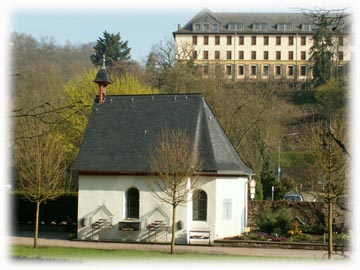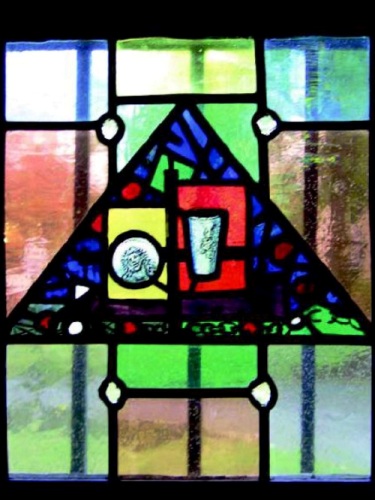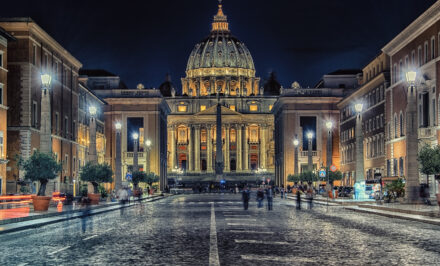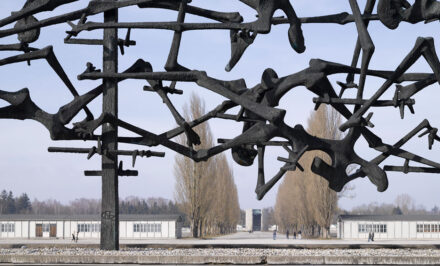 SOUTH AFRICA, Sarah-Leah Pimentel. When on February 2, the Schoenstatt Family heard the news that negotiations for the Original Shrine had stalled, many tried to interpret what this might mean. What came through most strongly was the need to deepen our commitment to the Covenant of Love and bring ever more contributions to the Capital of Grace — confirmed this week in the message by the General Presidium. Another dominant theme was that the Original Shrine is in chains. This second thought brought to mind Fr. Kentenich’s experiences at the Koblenz prison and his 20 January Inscriptio decision not to take any human measures to avoid the Dachau concentration camp.
SOUTH AFRICA, Sarah-Leah Pimentel. When on February 2, the Schoenstatt Family heard the news that negotiations for the Original Shrine had stalled, many tried to interpret what this might mean. What came through most strongly was the need to deepen our commitment to the Covenant of Love and bring ever more contributions to the Capital of Grace — confirmed this week in the message by the General Presidium. Another dominant theme was that the Original Shrine is in chains. This second thought brought to mind Fr. Kentenich’s experiences at the Koblenz prison and his 20 January Inscriptio decision not to take any human measures to avoid the Dachau concentration camp.
![]()
 We can perhaps gain greater insight into what is demanded from us, as the International Schoenstatt Family, by reflecting on the texts of the Carmel letters – the letters that Fr. Kentenich wrote from the Koblenz prison between October 1941 and February 1942. The Carmel Letters are just as meaningful today as they were 70 years ago and can perhaps help to awaken in us a calling to also live the Inscriptio for the liberation of the Original Shrine.
We can perhaps gain greater insight into what is demanded from us, as the International Schoenstatt Family, by reflecting on the texts of the Carmel letters – the letters that Fr. Kentenich wrote from the Koblenz prison between October 1941 and February 1942. The Carmel Letters are just as meaningful today as they were 70 years ago and can perhaps help to awaken in us a calling to also live the Inscriptio for the liberation of the Original Shrine.
Years of Jubilee are years of suffering
In a letter to the Schoenstatt Sisters of Mary on 5 January 1942, he tells them that “whoever knows the history of the Family will know that jubilee years have always been years of suffering and trial for us” (p214). These words apply to us today. In little more than a year from now we’ll celebrate the jubilee of the 100 years of our founding. If we follow the pattern of our history, it becomes clear the events around the Original Shrine are signs of God’s Divine Providence. From where we stand right now, we might not see what good can come of this, but Fr. Kentenich reminds us of how “lovely it will be when we are later able to see the ways along which God’s wisdom has led us in this time” (Letter of 28 November 1941, p194).
In another letter to the Sisters on 22 December 1941, our founder tells the Sisters that “you can observe how God always makes use of this imprisonment for the good of the individual and the Family as a whole” (p196). If we take the image that many people have used in recent weeks that the Original Shrine is in chains, then we can also trust that God is allowing this imprisonment to serve for our good.
Called to Live the Inscriptio
So then, what should our response be? Again Fr. Kentenich draws on the history of the Schoenstatt Family. In his 5 January 1942 letter, he says that each trial suffered was “only for a short time” because “we were sufficiently prepared…the Family answered each blow with deepened and more trusting self-surrender: first through the Blank Check, then through the crowning, and more recently through the Inscriptio” (p214-215).
As we stand on the threshold of a great jubilee, the 100th anniversary of our founding when we will renew our Covenant of Love and re-found Schoenstatt for the next generation, for the next hundred years, are we perhaps being called to remember the words of the Founding Document in which the Blessed Mother urges as to “prove to me first that you really love me, that you take your resolution seriously.” Perhaps only then, will the Original Shrine be freed. Fr. Kentenich says the same thing about his own freedom: “I know of only one means to become free: the Family must take the Blank Cheque and Inscriptio seriously” (19 January 1942, p218).
This idea is so important that he repeats in a letter to Fr. Menningen on 20 January 1942: “See to it that the Family takes the Blank Cheque and Inscriptio seriously…then I will be set free” (p220). On 9 February, Fr. Kentenich adds: “my freedom is the freedom of the whole Family.” We can say the same thing today: the freedom of the Original Shrine is the freedom of the whole Family.
But in order to gain this freedom, we must strive in just the same way as Fr. Kentenich called on the Sisters and the Schoenstatt Family to surrender themselves entirely to the will of God. In his letter to the Sisters on 28 October 1941, he reminds them that “living the Inscriptio happens in everyday life” when God demands our self-surrender and “takes us into the school of suffering” (p193).
Called to come together as one Family and strive for a common goal
Seen in the light of Divine Providence and in the context of our Schoenstatt history, the situation of our Family and the Original Shrine make sense. But perhaps we are also asking: Why? And why now? Especially at a time when it seemed that the negotiations for the Original Shrine were going so well? Again we can look at Father’s words in the Carmel Letters in which he explains that we need to come together as ONE Family and strive for a common goal. In his letter to Fr. Muehlbeyer shortly after New Year 1942, Fr. Kentenich writes that
“we ourselves have to stand under the Cross and hang on the Cross, we have to die a painful and miserable death: freed from self, freed from our ego in the spirit of the Inscriptio.”
The reason for this, he says is that
“then we will be prepared…the Family will have surrendered itself unconditionally to God and will set out on its flight into endless distances and depths. If we want to make use of this new year so earnestly and profoundly for ourselves and our community, we will have to give the few remaining forces wholly to our own Family. Otherwise the foundations will become fragile…” (p211-212).
“The foundations will become fragile.” If we are to renew the Covenant of Love as an International Schoenstatt Family and prepare the terrain for the next 100 years, we need to strengthen our foundations. We need to show our MTA that we really take our Covenant of Love seriously and that we really treasure our source of grace: the shrine.
Lent as a time to live the spirit of the Blank Cheque and Inscriptio
As we enter the third week of Lent, this is perhaps a good time to ask ourselves. Are we – as one, united Family – ready to live the Blank Cheque and the Inscriptio? Am we ready to strive harder than ever before for our self-sanctification and embrace the crosses which God sends us, so that we can offer many contributions to the Capital of Grace, to the stream of graces that flow out from the Original Shrine, and in turn, all of the daughter shrines, home shrines, work shrines and heart shrines of the world? Are we prepared to surrender our selfishness, our desires, our lives to the Blessed Mother as a ransom for the Original Shrine and as a gift to future generations of Schoenstatt children who will come after us, so that the words of the Founding Document will be as true of us on 18 October 2014 as they were for the first sodalists 100 years ago:
“We could not accomplish a greater apostolic deed nor leave our successors a more precious legacy than to urge Our Lady and Queen to erect her throne here [again] in a special way, to distribute her treasures, and to work a miracle of grace. You gather what I am aiming at: I would like to make this place, a place of pilgrimage, a place of grace for our house, the whole German province and even further afield.”
![]()














Please be kind enough to expand and share what relationship Carmel (as in the Carmelite Order or a particular Carmelite Monastery) had to Schoenstatt or the Founder at a time, as you refer to Father Kentenich’s letters 1941/2 as the "Carmel Letters" in your article.
—>>> “Carmel letters” is the name for the letters Fr Kentenich sent from prison in 1941/42, the prison building being a former Carmelite Monastery. This is a part of Schoenstatt History easily to be found at the section: “About Schoenstatt” on this website-
Thanks, the editors